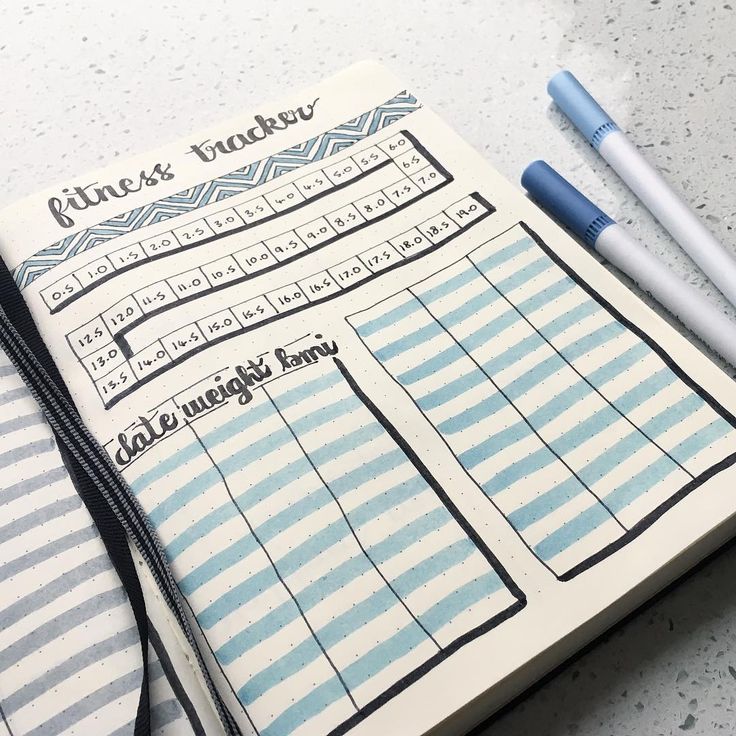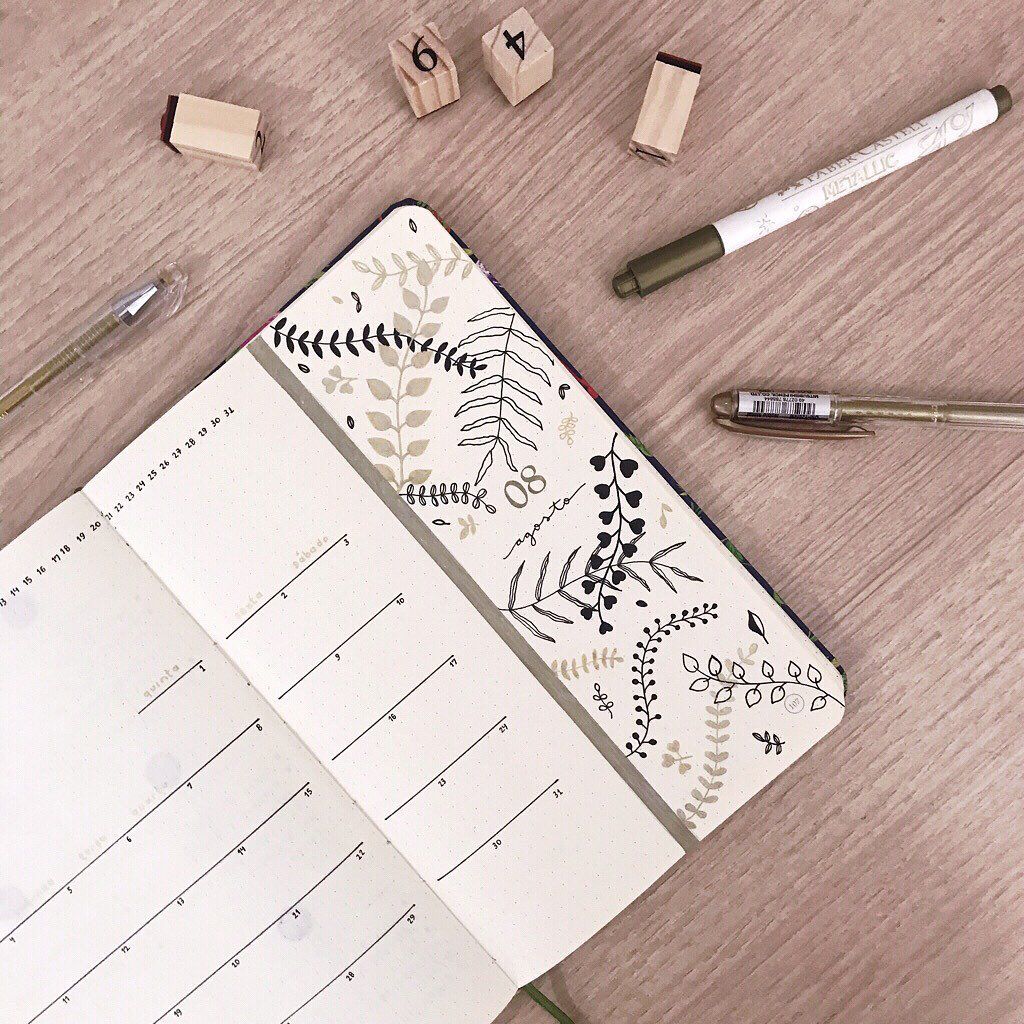What is bullet journal? Perhaps you don’t yet and this blog post is going to answer this question, so you will not only find out what is bullet journal, but also realize why you need it.
The bullet journal method is a popular method for planning in a notebook. But how exactly does the bullet journal method work, and how do you start? I’ll explain it!
WHAT IS BULLET JOURNAL METHOD?
The bullet journal method is a method that allows you to organize your notes in a notebook easily. It helps you get your thoughts and tasks out of your head in a smart way and write them down on paper. It also allows you to do planning on paper in a well-organized manner. You use different types of bullets to indicate what exactly what you have written down means.

What types of bullets are there in the bullet journal?
There are three basic types of bullets:
- Tasks: Symbolized by a period; indicate things to do
- Notes: Symbolized with a dash; indicate things you don’t want to forget
- Events: symbolized with an open circle; indicate things that are yet to happen
The bullets make it easy to take notes quickly, the purpose of which is clear.
You can use these bullets at any time to have all your notes organized simply.
On the bullet journal website, you can read more about this way of taking notes, and it also contains several examples.
Working with collections in a bullet journal
The bullet journal method is about taking notes on the spot and planning ahead and collecting information in a notebook. That’s what the collections are for.
A collection is a list where information is collected on one subject.

Well-known collections you can create are:
- The ‘Monthly Log’: Here you look ahead to the coming month; what things are on the agenda, and what tasks do you want to do?
- The ‘Future Log’: You look further than a month ahead. Here you write down what is already planned for the future.
- Custom Collections: Lists you create because you need them for something. For example, a packing list for a holiday, a list of restaurants where you still want to eat, or a list of things you still want to do for that one project at work.
To keep an overview, you can leave space in front of your bullet journal notebook for a table of contents. Here you can indicate which collection can be found on which page in the notebook.
WHY IS THE BULLET JOURNAL SO USEFUL?
The bullet journal method is the most convenient method for me to do clear planning in a paper notebook. There are three reasons for this:
Everything is in one place.
By using the bullet journal method, you can store everything you want in one notebook. You add a collection to your table of contents, and from your daily to-do lists, you can work with page numbers to refer to the collection.

Because everything is in one place, it is easy to browse back to check if something is still open. So you also keep an easy overview of what you have not yet done or finished.
You can use it entirely to your own liking.
Because you make a bullet journal on paper, you can easily adapt it completely to your wishes. You are not tied to what is or is not possible, as is the case with an app. You can choose yourself:
- What your layout will be
- Which bullets you use and don’t use
- How you make your bullet journal look like
- How far ahead you plan
- How many notes you add
And so on! Because you literally use a blank canvas, the possibilities are endless.
You have a better view of the complete picture.
You can use the bullet journal to take notes for today, but you can also plan well for the long term. For example, you can use the ‘Monthly Log’ to look ahead a month. This way, you not only look at your planning for today but also at what awaits you in the long term.
But you can also look further ahead without any problems and, for example, make your annual plan. In my blog article about the bullet journal annual planning, I give five useful tips for this!
START WITH THE BULLET JOURNAL: THIS IS HOW YOU GET STARTED TODAY!
Are you convinced, and do you want to get started? Beautiful! I share how you can get started in 6 steps.
Choose a nice notebook
All you need to use the bullet journal method is a notebook. And you can use any notebook you like for this.
Are you looking for a nice notebook? These are my two biggest recommendations:
- Oxford: For fun, but also very affordable notebooks
- Moleskine: For a simple, solid, high-quality notebook
Collect what you already have
You probably already make lists somewhere. With the bullet journal method, you can process all these lists in one place. Therefore, collect all the notebooks, loose papers, and Post It’s lying around that you want to organize better.
Focus mainly on the ‘outstanding’ lists. Where have you collected actions that you have yet to pick up? Where are the things that you really should not forget?
Make a plan for your bullet journal.
Before you start filling your bullet journal like a headless chicken, it makes sense to think about how you want to go about it.
For example, answer the following questions for yourself:
- Which bullets do you want to use?
- Do you only want to make notes in your bullet journal for today, or also plan further ahead?
- If you want to plan ahead, how far do you want to plan ahead?
- Which collections do you want to use?
Write this down for yourself, so you know how to get started.
Also, look at everything you collected in step 2. How can you incorporate this into your bullet journal?
If you want to plan ahead for a year, read the article about the bullet journal annual planning.
Do you enjoy working with goals? I can recommend it to you! Also, read the article about setting goals in your bullet journal.
Start with the table of contents.
If you are starting in a new notebook, start by keeping space in the front for the table of contents.
Also, number the first +/- 20 pages immediately so that you can immediately fill your table of contents.
Create the desired collections
After you have filled the table of contents, you can get started! Fill your bullet journal with the collections you want to use to make the most sense to you. For example, you will probably first make a Monthly Log and only then start taking daily notes.
Also, fill your notebook with what is still open from the notes you collected in step 2. Transfer anything you want to use to your bullet journal.
Use your bullet journal.
When everything is in it, it is time actually to start using the method! The bullet journal is not something you only look at once a day.
It’s best to have your bullet journal notebook open next to you during the day. As soon as you remember something, you can immediately write it down in your bullet journal.
Do you remember later that there is other information that should be added? That’s no problem. Create a collection, incorporate it into your table of contents, and refer it from the right pages.
GET BULLET JOURNAL INSPIRATION
Can you use some extra inspiration? I have made an overview of all kinds of lists that you can add as a collection in your bullet journal. This way, you can be sure that you will not forget anything, you can immediately process everything in a logical order. I have divided the inspiration lists by time span: what can you keep for a year? And for a month? It is not an infinitely long list, but just a handy list of practical handles to get you started.
Data analytics expert. As an analyst and project manager, I have proven to be a strong leader and team player in maintaining a suitable workspace for workers and industries in the oil and gas sector.
By taking into account various factors, with the assistance of state of the art technologies and the utilization of Big Data Analytics.
This includes considering various aspects like volume, velocity, variety, veracity, value together with complexity.
With the recent advent of data recording sensors in exploration, drilling, and production operations, oil and gas industry has become a massive data intensive industry.






